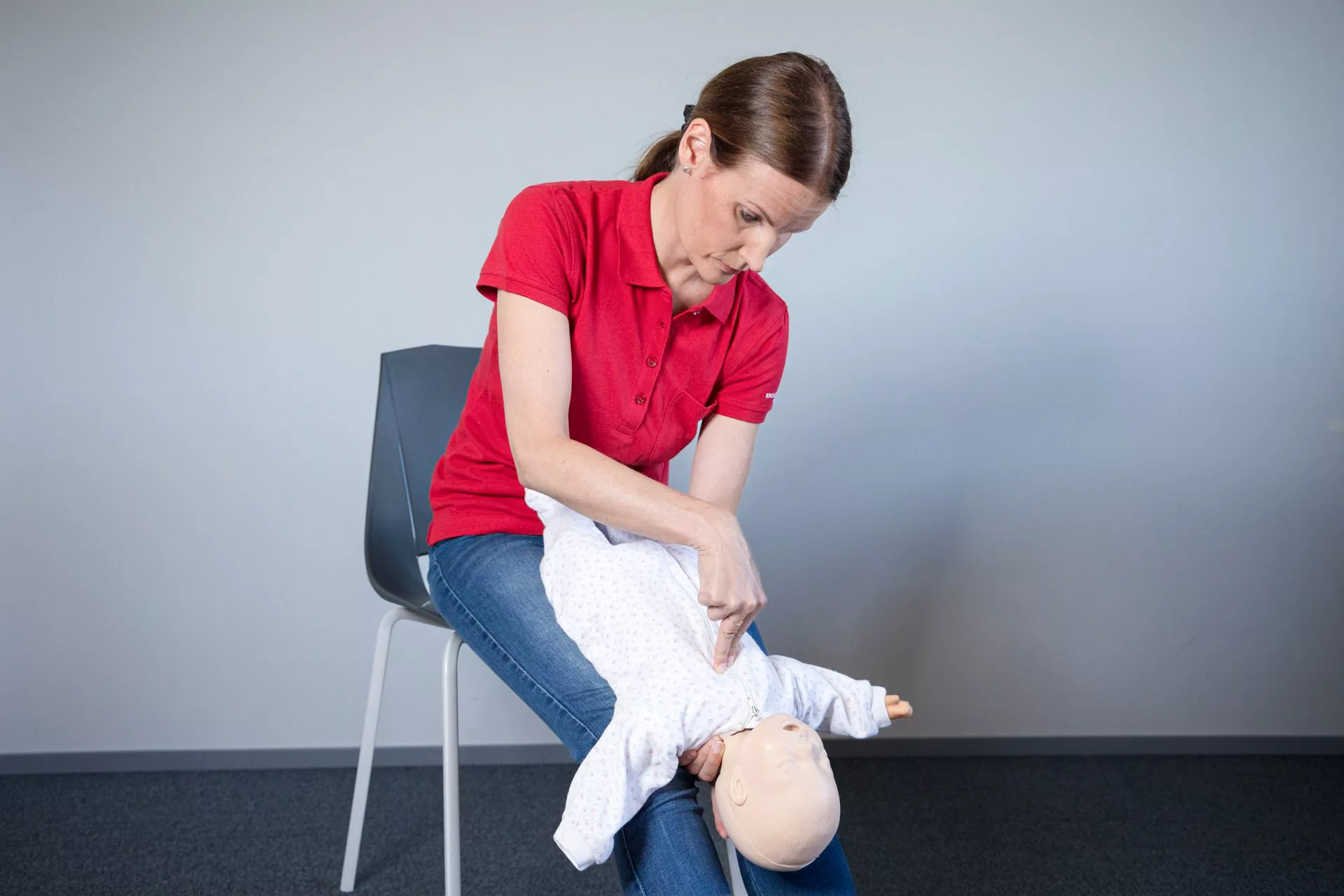How can you tell if a child is unresponsive?
An unresponsive child is limp, cannot be woken up and breathes abnormally or not at all.
For small children and babies, always start resuscitation with five rescue breaths.

How can you tell if a child is unresponsive?
An unresponsive child is limp, cannot be woken up and breathes abnormally or not at all.
Rescue breaths are vital when resuscitating a child, as the most common cause of unresponsiveness in small children is lack of oxygen. Cardiac arrests are less common in children than in adults. CPR must be started immediately to preserve blood circulation and especially oxygen supply to the brain.
From the age of puberty onwards, the adult resuscitation protocol should be followed.
If there are multiple first-aiders present, take turns performing CPR and switch every couple of minutes.
If the child was rescued from water and their mouth is full of water, turn the child onto their side first to remove the water before starting CPR.